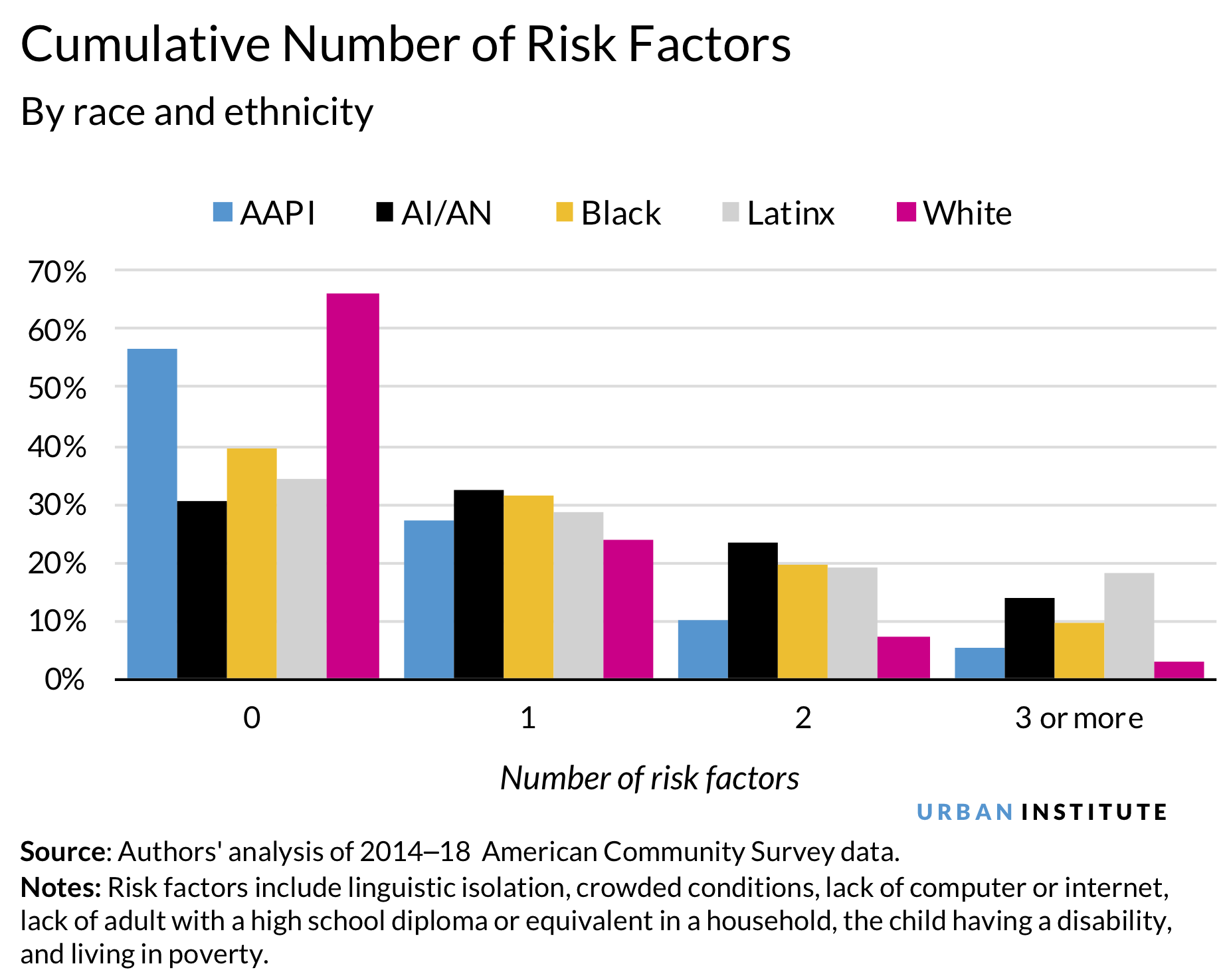
<p>Laura Olivas/Getty Images</p>
Reflecting on an unconventional spring semester, experts predict the national experiment in remote learning will fail Black and brown students more acutely than others. Given the increasing likelihood that remote learning will continue into the next school year, it is important that school districts, policymakers, and youth- and family-serving agencies and organizations understand and address the racial and ethnic disparities in students’ home learning environments that make meaningful participation in online learning more difficult.
The conversation to date on disparities in remote learning environments has been incomplete. It narrowly focuses on access to internet and technology and often leaves out Asian American and Pacific Islander (AAPI) and American Indian and Alaska Native (AI/AN) students. It also fails to frame these disparities as structural barriers—many of them a direct result of structural racism (PDF)—that make it harder for students of color to succeed in school, even during normal circumstances.
Latinx, AI/AN, and Black students are consistently more likely to face remote learning challenges
We examined the prevalence of a set of household factors that evidence ties to lower academic achievement. Remote learning during the COVID-19 pandemic is likely to exacerbate the effects of these risk factors.
- Linguistically isolated students may need additional language support to complete their classwork and may struggle if their parents or guardians do not speak sufficient English.
- Living in crowded conditions can make it hard to focus on schoolwork, a challenge exacerbated when more family members are at home.
- Students without access to a computer or internet may be unable to sign into online classes and complete their assignments.
- If no adult in the household has completed a high school education, students with more advanced schoolwork may not have access to the help they need.
- Students with disabilities may lose access to critical supports they received at school when learning at home.
- Students living in poverty are more likely to lack educational and other resources that support learning at home and to face stressors that make remote learning more difficult.

Disparities increase as risk factors compound
Additionally, students of color—particularly Latinx students—are more likely than students from other racial and ethnic groups to be exposed to multiple risk factors simultaneously. Latinx, Black, and AI/AN students are more likely to face the compounding challenges of two risk factors, and Latinx students are the most likely to face three or more risk factors. White and AAPI students are far more likely to face none of the risk factors we examined.

The set of risk factors examined here is not a comprehensive list of all household factors that may make remote learning harder. Other important factors to be mindful of during the pandemic—which are more difficult to capture in the data—include a lack of parental supervision for learning (if both parents are essential workers), increased stress (because of health concerns or if parents lose their jobs), and difficulty understanding technology used for remote instruction.
Significant investment is needed to address disparities in home environments in the short and long run
Early evidence suggests learning losses from the pandemic, though large for all students, will be largest for those who are Black and brown. This does not reflect a lack of effort on the part of families, but rather a magnification of structural inequities in school quality and home environments baked into our society. The legacy of racism may be more visible during the pandemic, but it operates all the time, making it harder for Black and brown children to succeed in school.
Bold action, if taken now, can mitigate the extent to which disparities in home learning environments harm student success in the pandemic’s aftermath and beyond. But low-income school districts, which are more likely to serve students with the most need, already had fewer resources than their wealthy counterparts and now face additional budget strain because of the pandemic. As a result, effective interventions, including those discussed below, will require significant and targeted federal and state investment in students most at risk.
As remote learning continues into fall, school districts must direct resources toward improving home learning environments for students. For school districts, this may include delivering books, school supplies, desks, and headphones to students’ homes to make their environments more conducive to learning. Additionally, schools can provide virtual tutoring to students who struggle to learn online or whose parents are unable to help them with homework.
Once students can safely return to school, targeted, innovative strategies will be required to ensure students can regain lost ground. These may include lengthening the school year, hiring additional tutors, expanding existing summer school programs, and promoting summer learning through camps and youth programs.
Finally, as we think about how to create a more racially equitable society in the wake of COVID-19, we must remember that, at their best, schools serve to mitigate racial disparities in home environments, but they cannot eliminate disparities alone. If we are serious about leveraging schools’ potential to drive equal opportunity, we must directly target the root causes of risk factors that threaten academic success by implementing policies that improve families’ health, housing, and economic security and stability. Doing so will ensure the next disaster does not disproportionately burden children of color, as it is likely to do this time around.
Let’s build a future where everyone, everywhere has the opportunity and power to thrive
Urban is more determined than ever to partner with changemakers to unlock opportunities that give people across the country a fair shot at reaching their fullest potential. Invest in Urban to power this type of work.